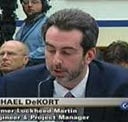Waymo is unwilling (unable) to prove their L4 Driverless Vehicle does no Evil
A while back Waymo’s parent Google used to have a motto and official company code of conduct that said — “Don’t Be Evil”. They modified that to dropping the motto and moving and changing that statement, in the preface of the code of conduct, to saying this at the end of it — “And remember… don’t be evil, and if you see something that you think isn’t right — speak up!”
Well . . .this is me “speaking up”.
Waymo is now offering what appears to me extremely “geofenced” free L4 driverless rides in Chandler, Arizona. There appears to be no safety driver nor real-time remote control. As I have written before “geofencing” is largely hype and meant to inspire false confidence. The key reasons for this being accident scenarios for the relevant areas and road patterns still need to be learned, which will cause injuries and casualties to learn. And due to significant problems with perception systems, especially cameras, being easily fooled, objects that can be in the geofence need to be learned. That includes at least evaluating every fabric pattern on the planet. (Just this week some researches published a study showing them disabling an AV just by wearing a shirt with a specific pattern on it.) I have also written that most of the development and testing has to be done in proper simulation. That “proper” simulation must use DoD simulation technology since the systems being used in this industry have significant model fidelity and real-time issues. (I provide more on all of this in my articles below.)
Recently Waymo was offered an opportunity to prove their tech is well engineered and safe. In a recent Ed Neidermeyer TechCrunch article Ed wrote this regarding the matter;
Waymo’s Director of Product Saswat Panigrahi declined to share how many driverless miles Waymo had accumulated in Chandler, or what specific benchmarks proved that its driver was “safe enough” to handle the risk of a fully driverless ride. Citing the firm’s 10 million real-world miles and 10 billion simulation miles, Panigrahi argued that Waymo’s confidence comes from “a holistic picture.”
“Autonomous driving is complex enough not to rely on a singular metric,” Panigrahi said.
It’s a sensible, albeit frustrating, argument, given that the most significant open question hanging over the autonomous drive space is “how safe is safe enough?” Absent more details, it’s hard to say if my driverless ride reflects a significant benchmark in Waymo’s broader technical maturity or simply its confidence in a relatively unchallenging route.
(The article — https://techcrunch.com/2019/11/01/hailing-a-driverless-ride-in-a-waymo/)
Of course, this is a dodge and misleading hype. People who are competent and ethical and who do not want to “be evil” and actually put safety first do not cower from the light of day, they seek it. First, miles and disengagements mean nothing without scenario data. Second, if Waymo was using the right simulation technology (which includes a full motion DIL simulator which they do not have.) they would show the world the learned and tested scenarios, and the environments that testing was done in. Where simulation was used, which should be for over 99.9% of it virtually eliminating safety driving, they would provide proof that every model is a legitimate and precise digital twin to its real-world counterpart. Since they can’t do ANY of that, they by default, are acting “evil”. And given the rest of their published belief on that I assume they support my “speaking up” on that.
My articles
How “Geofenced” Autonomous Vehicles should prove they are a legitimate L4
Autonomous Vehicles Need to Have Accidents to Develop this Technology
Proposal for Successfully Creating an Autonomous Ground or Air Vehicle
Without DoD simulation technology Autonomous Vehicles cannot be created or created Legally
Using the Real World is better than Proper Simulation for AV Development — NONSENSE
Simulation can create a Complete Digital Twin of the Real World if DoD/Aerospace Technology is used
The Hype of Geofencing for Autonomous Vehicles
SAE Autonomous Vehicle Engineering Magazine — End Public Shadow/Safety Driving
Relevant Biography
Former system engineer, engineering and program manager for Lockheed Martin. Including aircraft simulation, the software engineering manager for all of NORAD and the Aegis Weapon System.
Key Autonomous Vehicle Industry Participation
- Lead — SAE On-Road Autonomous Driving (ORAD) Simulation Task Force
- Member SAE ORAD Verification and Validation Task Force
- SME — DIN/SAE International Alliance for Mobility Testing & Standardization group to create sensor simulation specs
- Stakeholder for UL4600 — Creating AV Safety Guidelines
- Member of the IEEE Artificial Intelligence & Autonomous Systems Policy Committee
- Presented the IEEE Barus Ethics Award for Post 9/11 DoD/DHS Efforts
My company is Dactle — We are building an aerospace/DoD/FAA level D, full L4/5 simulation-based development and testing system with an end-state scenario matrix to address all of these issues. We can supply all of the scenarios, the scenario matrix tool, the data, the integrated simulation or any part of this system. A true all model type digital twin. If someone would like to see a demo or discuss this further please let me know.
